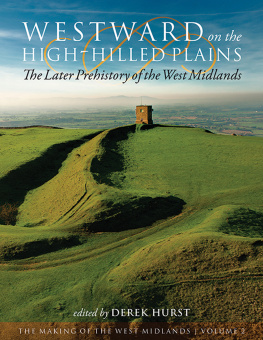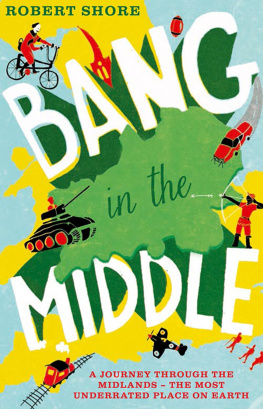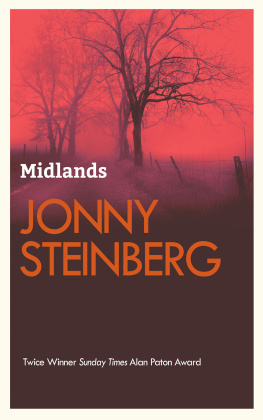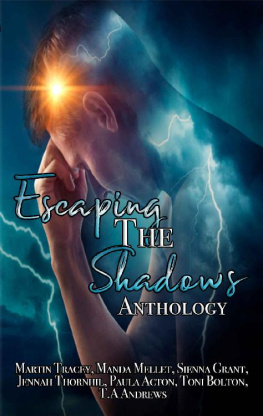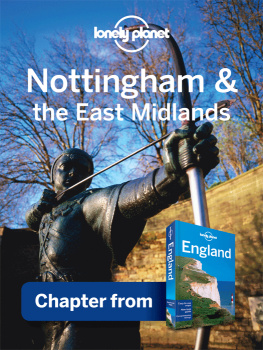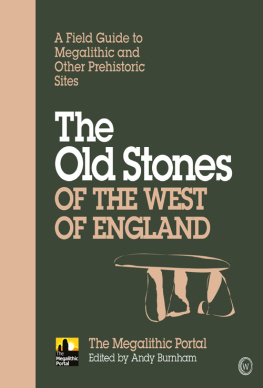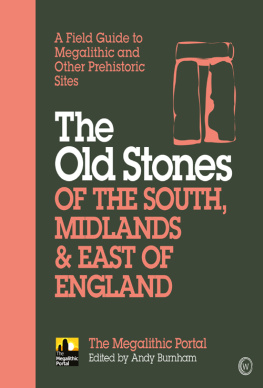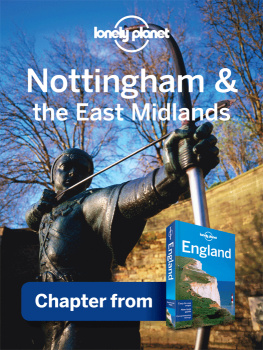
Westward on the high-hilled plains
Where for me the world began,
Still, I think, in newer veins
Frets the changeless blood of man.
First stanza of poem LV from A Shropshire Lad by A. E. Housman
Contents
Niall Sharples
Elizabeth Pearson
Hal Dalwood
Mike Hodder
Stuart C. Palmer
Peter Dorling, Keith Ray and Paul White
Andy Wigley
Chris Wardle
Derek Hurst
Annette Hancocks
Angie Bolton
Derek Hurst
Andy Wigley
Preface
The move towards the production of this volume was first mooted at a meeting on West Midlands later prehistory held in the council chamber of Worcestershire County Council in September 2002 (doi:10.5284/1038433), as part of the national initiative by English Heritage (now Historic England) to promote research frameworks as central to the practice of archaeology. This event was followed up by a seminar which was focussed on establishing a research framework agenda for the later prehistoric period, and that was held at Birmingham University in July 2003. The later prehistoric research agenda and strategy was finally published (Hurst 2011), alongside that for the other periods, in The archaeology of the West Midlands: a framework for research (Watt 2011). That left the West Midlands regional research assessments, the period-based background surveys to the agenda and strategy, as still to be published to complete the West Midlands Research Framework. This is the second volume in this intended series of six volumes.
The majority of the research assessment papers in this volume were, therefore, first drafted in 2002. Thereafter, during 2004, a process of revision was instigated in consultation with authors with the intention to publish. At that time, however, several papers were still missing, and, in particular, one on a major topic, and it was not clear whether these would be forthcoming. Also illustrations, especially based on a map template, were lacking. With limited support from the Worcestershire Historic Environment and Archaeology Service (now Archive & Archaeology Service) the updating of existing papers was finally achieved in 2009, and this process then continued, selectively, into 2011. While this had significantly advanced the volume, the unavailability of funding to deal with the major topic omission and for drawing up the template maps, still remained major obstacles to publication. Fortunately, these difficulties were eventually overcome in 2014, when English Heritage undertook to support progressing the volume to final publication.
The West Midlands presently struggles archaeologically to project a distinct regional identity. The region is geographically defined by reference to other areas, such as Wessex and the South-West, and the North, which have developed a stronger identity, both with regard to landscape and their associated historical culture. Whether this has always been the case going back into the more distant past, apart from a temporary eminence during the middle Saxon period (viz. kingdom of Mercia), is presently unclear, and this surely forms one of the lines of enquiry that might be pursued archaeologically. In more recent times part of the region attained international fame as the birthplace of the industrial revolution, though this occurred, incongruously, at Coalbrookdale in rural south Shropshire. This ignited the blaze of industrial expansion that later spread eastwards, as the Black Country, but, sadly, industrial heritage is not celebrated in the same way as other national achievements, and this has not adhered to the regional sense of identity. The resulting lack of a well formed self-identity is possibly exacerbated by the land-locked centrality of the West Midlands, and by its proximity to other much better (i.e. culturally) defined regions (e.g. Wales). This weak sense of identity has also probably led to a failure to recognise and then build a sense of character and place, even when circumstances allowed. This has even encouraged the view, perhaps most readily seen politically, that the West Midlands is peripheral, and so outside the range of normality. Hopefully this volume will serve to provide grounds for building a stronger sense of West Midlands identity based on the past, which could then be a source of greater inspiration towards developing a stronger sense of identity for the inhabitants of the region today.
Introducing this volume
This volume presents the papers that formed the basis of the research agenda and strategy for later prehistory (Hurst 2011) published in The archaeology of the West Midlands: a framework for research (Watt 2011). In common with the earlier prehistoric Regional Research Assessment volume in this series (Garwood 2007), the papers of the later prehistoric volume adopt a variety of approaches, variously being either regional, county-wide or thematic (e.g. by site type, or artefactual typology). Inevitably, because of the nature of the assessment papers, they often conclude by looking forward and so also include agenda and strategy points, though in this case usually very specific. These seem quite validly expressed here as part of the assessment rather than the formal Agenda and Strategy volume, as it is clear that the broad agenda formulated in Watt (2011) is more concerned with the related general points and issues. The latter include the need to recognise key sites and deal with them appropriately, the need also for greater scientific focus, the case for select work on major monument types sympathetic both to their protected status and their significance for the period, and how to use the broad appeal of archaeology to pursue this agenda. Accordingly, both Watt (2011) and this volume are intended to both be of relevance, when looking to develop projects where later prehistoric archaeology is involved.
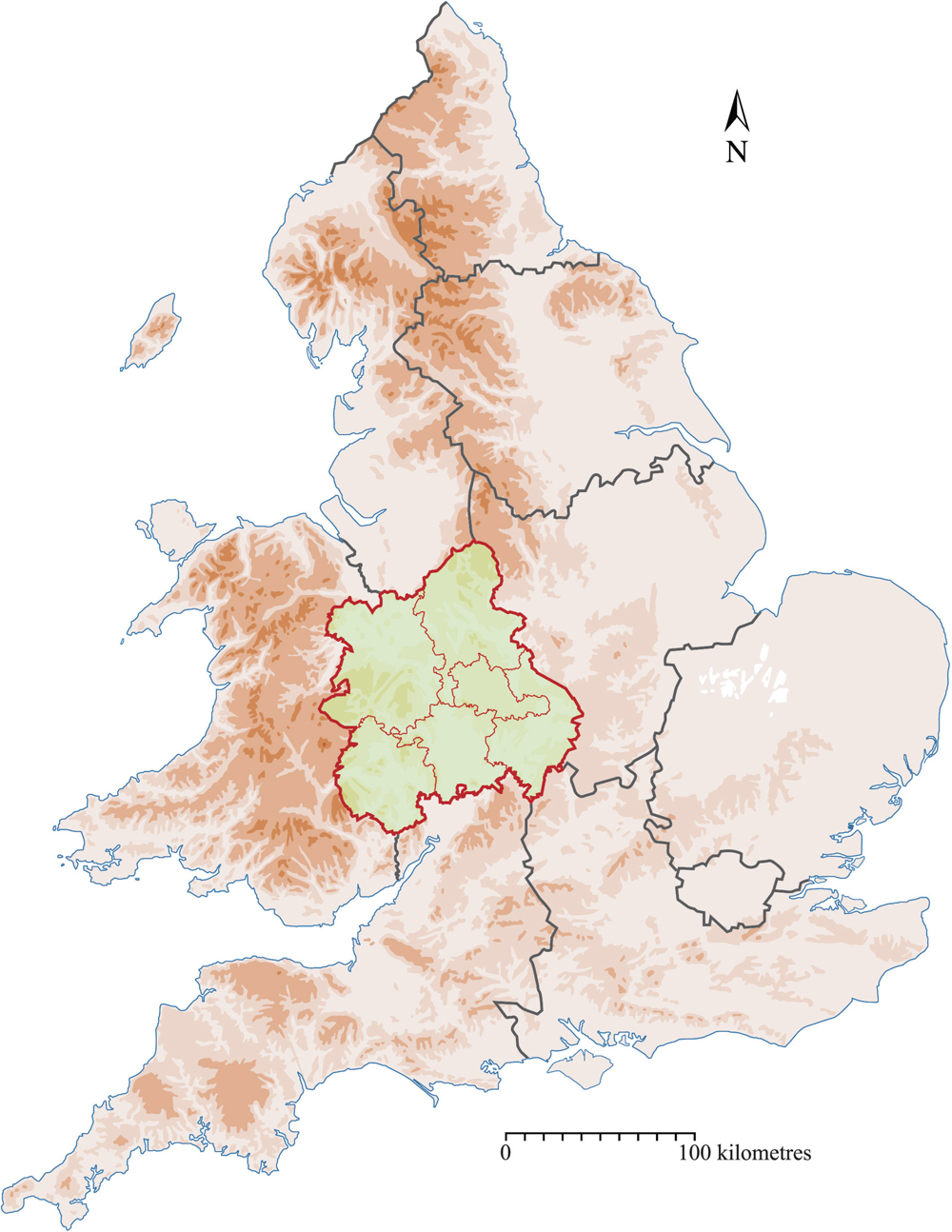
The West Midlands region in geographical context.
The later prehistoric papers have been arranged so that a survey of environmental evidence for changing landscape in the region (by Pearson) is followed by papers in chronological order, with most of these being reviews of the evidence within a county (e.g. by Palmer), followed in turn by some thematic papers largely focussed around artefacts of the period (e.g. by Hancocks), and, finally, there is an overview of the later prehistoric activity viewed against its West Midlands landscape and as compared with other parts of the country (by Wigley).
Whereas the West Midlands is largely an area of rural counties (), the former West Midlands County Council area is administratively complicated, being composed of several, mainly densely populated, boroughs and the coverage in this volume reflects this. It has resulted in a variable coverage: that is, Birmingham and the Black Country with its own paper (Hodder), and Solihull being covered in the Warwickshire paper (Palmer), but no specific coverage for the other metropolitan parts of the region.
Acknowledgements
Many people have, over the long period of this project, given up their time and/or committed resources under their control to keeping this volume in view, with the knowledge that the research assessments represent key statements on the state of later prehistoric studies in this region. These statements are important, not least because they are too rare examples of synthesis, but also because they provide an opportunity to disseminate more widely some striking highlights from the recent era of developer-funded archaeology. As such, this second volume in the West Midlands Regional Research Assessment series is a further stepping stone to greater understanding in an archaeological world currently largely drowning in data.
Next page
